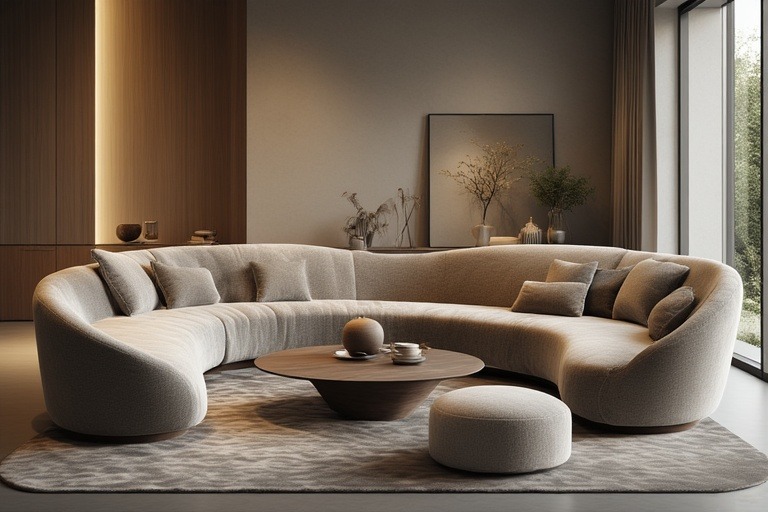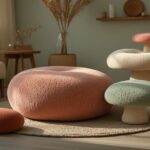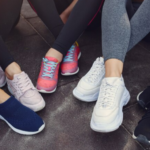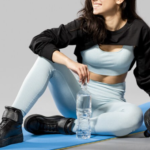When it comes to modern interiors in 2025, furniture is no longer just functional — it’s becoming art in motion. Among the strongest design movements this year are curved sofas and sculptural seating, merging comfort with aesthetic statement-making. These pieces are reshaping living rooms, boutique lounges, and creative spaces worldwide.
But what makes them so special? And how do they compare with traditional straight-lined seating? Let’s explore.
🌙 First Impressions: The Allure of the Curve
Curved sofas instantly create a soft, inviting atmosphere. Unlike rigid rectangular couches, their flowing silhouettes mimic organic shapes found in nature.
-
Fluid lines → evoke a sense of calm and harmony.
-
360° social seating → perfect for conversation and gatherings.
-
Artistic design → doubles as a sculptural statement piece.
The first impression? A sofa that doesn’t just fit a room — it transforms it.
🪑 Sculptural Seating: Furniture as Functional Art
While curved sofas bring fluidity, sculptural seating goes one step further. These are chairs, loungers, or accent seats designed with bold geometric forms, asymmetry, or unexpected textures.
-
Think egg-shaped loungers, twisted metal bases, or stone-inspired silhouettes.
-
They blur the line between furniture and art installation.
-
Perfect for homeowners who want a conversation starter in their space.
In 2025, sculptural seating has become a luxury lifestyle marker — signaling taste, creativity, and individuality.
🆚 Curved Sofas vs. Traditional Sofas
The debate often comes down to style vs. practicality:
-
Traditional Sofas → Straight, structured, and easy to place against walls. Ideal for small or conventional layouts.
-
Curved Sofas → Require more space but bring fluidity, luxury, and a sense of openness.
Where traditional seating maximizes function, curved seating emphasizes design impact. For homes where aesthetic storytelling matters, curves win.
🧵 Materials & Textures Defining the Trend
The 2025 trend isn’t just about shape — it’s also about touch and feel.
-
Bouclé & Teddy Fabrics → Soft, cloud-like, and Instagram-ready.
-
Velvet Upholstery → Adds luxury with rich depth.
-
Leather & Faux Leather → Sleek and timeless for sculptural designs.
-
Stone & Metal Bases → Industrial edge in modern sculptural seating.
These materials ensure that even bold designs remain comfortable and livable.
📈 Why Curved & Sculptural Furniture Is Trending in 2025
Several lifestyle and design shifts have pushed this trend to the forefront:
-
🏡 Open-concept living → Curved sofas help define zones without walls.
-
🎨 Art-driven interiors → Furniture as self-expression.
-
📸 Social media influence → Instagram loves sculptural designs as a visual backdrop.
-
🌍 Biophilic design movement → Organic shapes bring natural calm into urban homes.
-
💼 Luxury branding → High-end furniture houses are leading with iconic sculptural pieces.
This is less about a passing trend and more about a new era of home design.
💡 Styling Tips for Curved Sofas & Sculptural Seating
To make these bold pieces work in your home:
-
Center placement → Don’t push curved sofas against the wall; let them float.
-
Minimalist backdrop → Keep other furniture simple to let sculptural pieces shine.
-
Statement lighting → Pair with modern chandeliers or floor lamps for dramatic effect.
-
Mix textures → Balance soft bouclé with glass, stone, or metal accents.
The goal is to create a gallery-like living space without losing warmth.
✅ Final Verdict: Are Curved Sofas & Sculptural Seats Worth It?
If you’re looking to make your home feel curated, modern, and visually dynamic, then yes — curved sofas and sculptural seating are worth the investment. They may require more thought in layout and styling, but the result is a living space that feels both luxurious and personal.
Unlike traditional sofas that blend in, these pieces command attention. In 2025, they’re not just furniture — they’re conversation pieces, status symbols, and works of art that anchor a room’s entire design.
✨ Bottom Line: Curved sofas and sculptural seating embody the perfect blend of comfort and artistry. They’re not just following a trend — they’re shaping the future of interiors.















